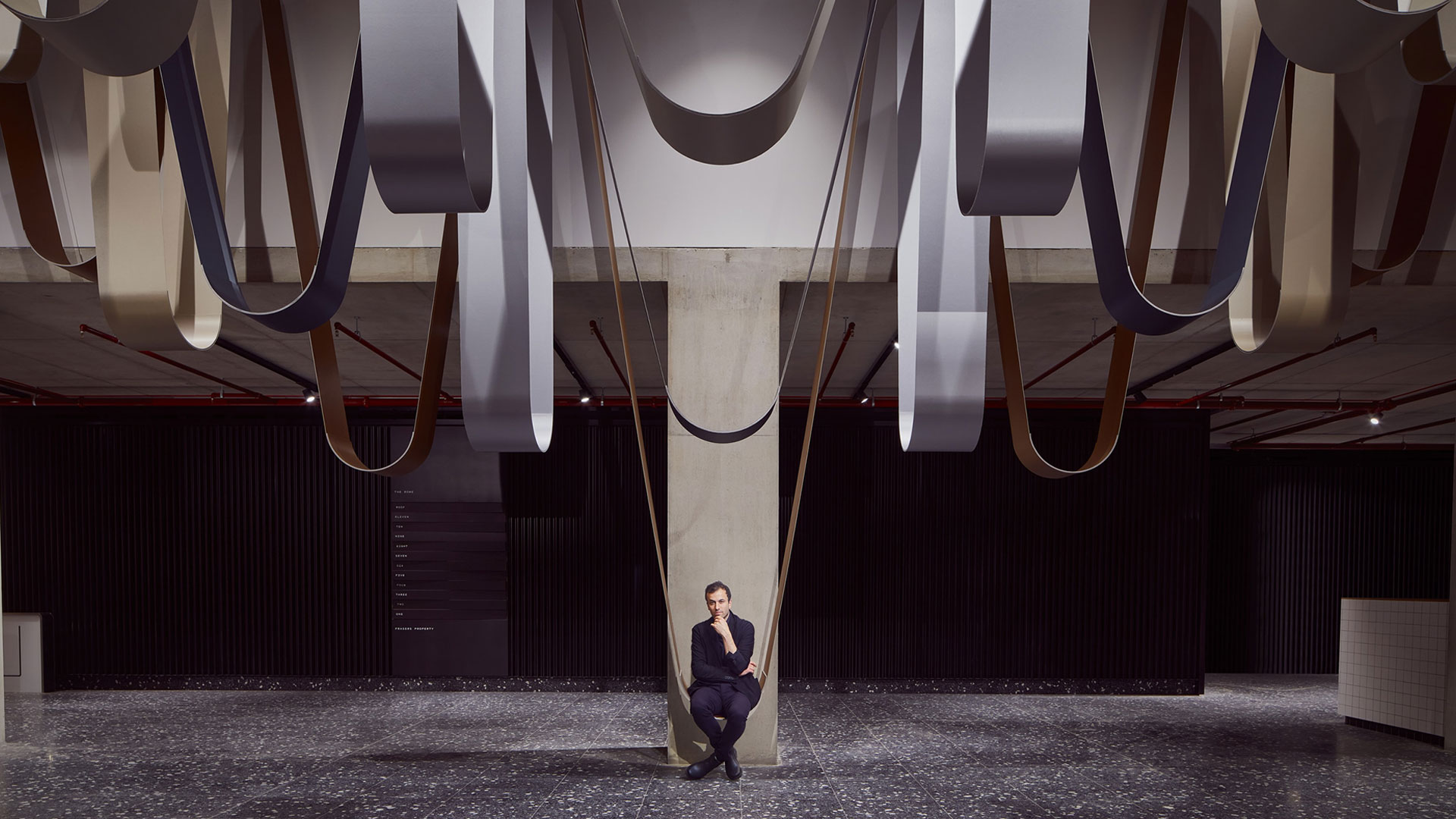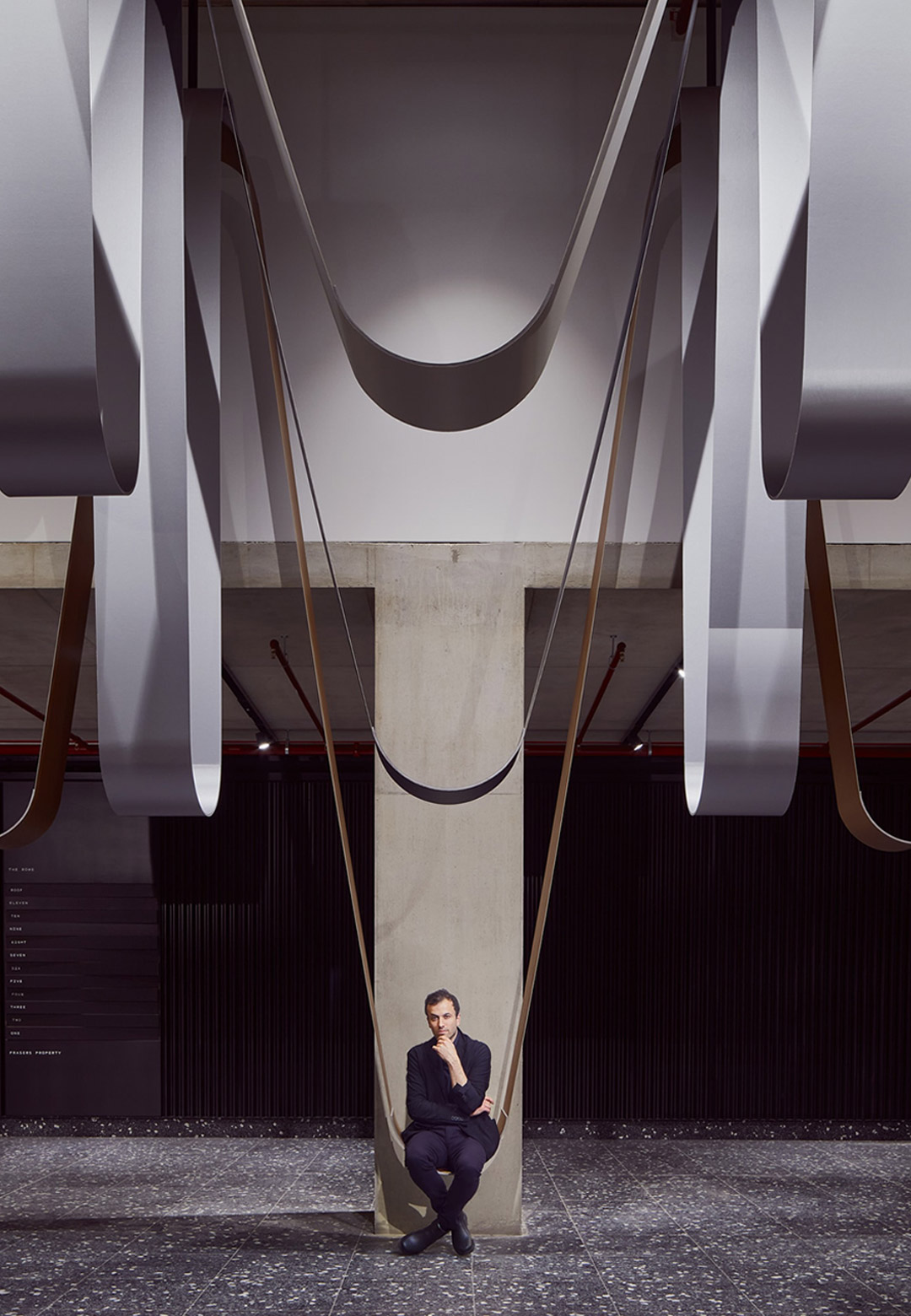How prolific are site-specific artworks in nurturing creative interaction with the social and cultural fabrics of a locality?
Let’s begin by understanding what site-specific art pieces are—they can be defined as an artist’s intervention in a specific location, creating a piece that remains integrated and exclusively tied to the site, comprehending, and setting dialogue with it, celebrating it, borrowing from it, giving back to it, leaning into the geography, culture, built fabric, and the very essence of the space. These projects, set and specifically belonging to a site, transform the environment itself into an experience. Imagine what American artist Michael Heizer’s ‘City’, the land art magnum opus that took 50 years to realise in the Nevada desert, would be like if positioned inside a walled museum or in a different location altogether. Presumably, it would completely disrupt the intended scale and purpose of the masterpiece, restructuring the viewer’s experience and the meant intercession of the artist.
Perpetually testing the lines between art and function, Paul Cocksedge unveiled his latest site-specific art piece decorating the lobby of The Rowe, the new sustainable office space in London’s Whitechapel in the UK, ‘loop’ing and celebrating both the metal-working past of the building and the rich textile history of the East London neighbourhood it resides in. Titled ‘LOOP’, the public art commission is achieved using a ‘hybrid material’ developed specifically for the project, an assortment of steel and fabric suspended inside the building. “We wanted to represent this long and varied history by using fabric and its natural properties, to create architectural forms,” shares Cocksedge, co-founder of Paul Cocksedge Studio, known for experimenting with materials and creating spaces and product designs of intrigue and human interaction.
Comprising 32 loops, the permanent design installation was commissioned by Frasers Property UK for The Rowe, and fills the building’s vertical space with rhythmic loops of metallic fabric, spanning 11.2 m, reaching a depth of 5.2 m and a height of 6.8m. At the centre, a single loop (and the longest) invites visitors to take a seat, reminiscent of Cocksedge’s 2019 public installation for London Design Festival 2019, ‘Please Be Seated’.
“Loop is a visual artwork, but it is also interactive. It invites people to sit. This piece plays with people’s expectations. Visually speaking, there is effortlessness and lightness to it, but it also looks as if it’s made from metal. Once you get up close you realise it’s actually fabric, which challenges people’s perceptions. With LOOP, I wanted to explore how to create something that feels monumental without using a lot of heavy materials,” Cocksedge shares in an exclusive interview with STIR.
“As inspiration for this artwork, I walked to Whitechapel, where The Rowe building is, from my studio in Hackney. It’s an amazing experience as you move through London’s different communities, and it’s a real demonstration of the city’s huge mix of cultures. You get a glimpse of the past, the present and the future, and particularly in Whitechapel you see that. The area has historical connections with clothing and textile manufacturing, and there’s still such a burst of colour and texture and patterns as you pass through it. It’s a real melting pot of materiality and culture,” he adds.
Cocksedge sought to weave all these tangible and intangible layers of life, space, and history together, to create a “continuous line of materiality as well as a playful, interactive, functional experience. The name reflects the artwork’s form and the tactile sense of fabric, as well as the way London’s history loops together,” he explains. “Whitechapel’s garment, textile, and metal-working history date back hundreds of years, and our installation at The Rowe pays homage to this – creating a fluid, rhythmic piece that invites visitors to sit, rest, and contemplate. The piece balances weight and structure with a visual lightness,” the British designer adds.
The studio spent months researching and developing the ‘hybrid material’ that makes up the piece, a material that would operate as both decorative and structural. Three materials were sandwiched together and fused under heat and pressure, with an inner core made of heavyweight structural cotton (the load-bearing element), while the outer sides are articulated in the metallic fabric in industrial, calming, and modern hues of steel and copper.
“The metallic colour is a link back to the history of the building, which used to be a bell foundry – something we’ve tried to echo in the shape of the artwork as well. Although it looks effortless, this artwork required heavy number crunching behind the scenes, which was done in partnership with the brilliant team at Atelier One engineers. There’s a hidden metal structure as well, acting as counterweights to ensure the piece is stable and can support the weight of a person,” Cocksedge shares.
“The gesture of the piece is fluidity. It is based on an instinctive sketch, created as an immediate reaction to the space, and then designed to incorporate the human scale. The piece balances weight and structure with a visual lightness, reminiscent of the outstretched wings of a butterfly, or the arches of a cathedral,” he elaborates on the contemporary design.
Designed by RIBA Stirling Prize-winning architectural practice, Allford Hall Monaghan Morris, The Rowe resides in the bustling Whitechapel in London and roughly provides 15,050 sqm of office space, as a landmark building site for integrated real estate developer, manager and investor, Frasers Property UK. “The brief (from them) was very open, but the idea was to fill the (building’s) atrium space with an artwork that could speak to the people going into the building, as well as anyone walking past,” shares Cocksedge.
The rhythmic intervention is also successful in contrasting the linear forms of the architecture. According to the design studio, despite being minimal in appearance, ‘LOOP’ is underpinned by complex engineering. “Every single line of the artwork is balanced, calibrated, and tensioned to appear, at first sight, like a thin piece of metal. In actuality, it is an innovative mix of structural and metallic fabric,” Cocksedge explains.
Zoë Allen, the art consultant for Frasers Properties and founder of Artistic Statements, said—“It’s so encouraging to see a developer embrace art, creating a truly impressive building like The Rowe that respects the local culture and history. Yinka Ilori and Paul Cocksedge are remarkable creative talents, and the intelligence, playfulness, and thought-provoking nature of their installations are testament to this.”
“This is an open space that people are allowed to go into, so the piece isn’t exclusive to The Rowe. We wanted the artwork to talk to people working in the building just as much as it talks to the people walking by and become part of the street life. You can see it from the road, and we wanted it to be enticing. I want it to create this sense of overlapping colours and lines, and that interconnectedness of London and its overlapping communities,” he adds.
Cocksedge relays that LOOP’s interactive element is an integral part of the studio’s work—"as I have often said before, people complete our work in the sense that the scale of everything is based around the person, and it engages with people emotionally as well as physically and visually. We wanted LOOP to have this element of interactivity. Public art is often untouchable, but sometimes when you’re in a public space, allowing people to become involved adds a completely different dimension and creates an emotional, and hopefully more memorable experience.”






 Sign in with email
Sign in with email










What do you think?